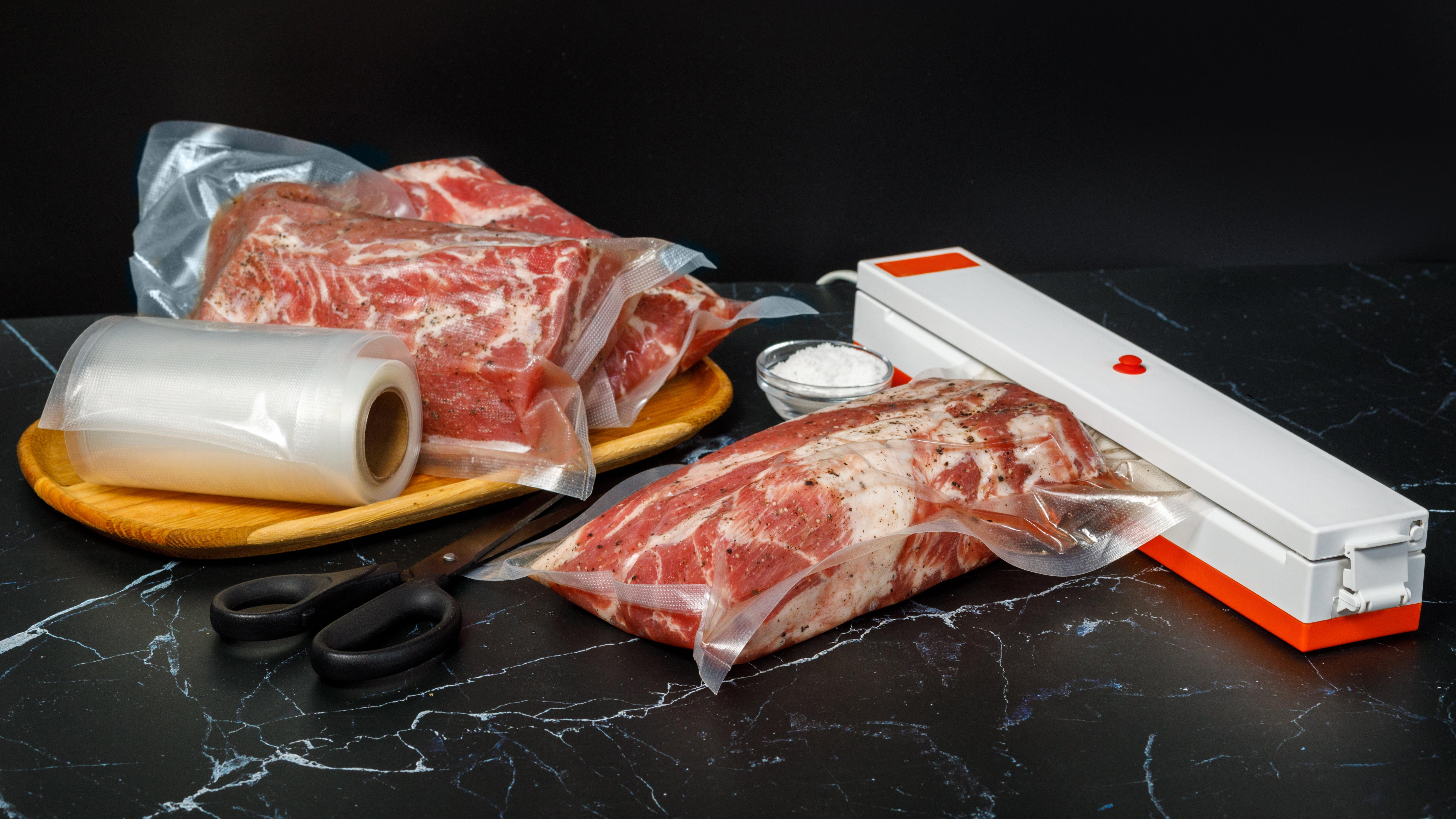The Best Ways To Use Your Vacuum Sealer
How to make a machine that sucks the air out of food bags work for you.
It's no secret that removing air from food is the best way to keep it fresh and free of bacteria; that's why most of our groceries are sold sealed. TikTok recently suggested you suck the air out of the food bags yourself, but The Takeout is of the opinion that's not a great way to do it, for the sake of you and your food.
Last Christmas, my longtime BFF and the friend I talk food with the most, gifted me a vacuum sealer. It was the best kind of gift: a total surprise and something I didn't realize I needed. At first, I figured I'd use it here and there. But it's quickly become one of my go-to kitchen tools. Here's how I use it.
Some basic vacuum sealer tips
- My vacuum sealer can accommodate several different sizes of bags, which I got all in one shipment as part of the same gift I got the vacuum sealer in. I try to use the bag closest to the size of the thing I'm freezing.
- Liquids can be tough—you don't want the sealer to suck any liquid into itself while it's getting the air out. On my machine, you can just do the seal without doing the vacuum, which is what I do for really thin liquids like chicken stock. For something thicker like spaghetti sauce, I sometimes take a tiny bit of air out by running the vacuum function for just a second or two, and then I hit the seal button.
- Label, label, label. This is a problem with any freezer food, but you definitely want to label what's in the bag and when you put it in there. Even vacuum sealed freezer food doesn't last forever, and when it's all in uniform pouches, stuff can look alike. You don't want to end up with beef stew when you think you're getting spaghetti and meatballs (I mean, actually, that's a champagne problem, but, you know what I mean).
Store huge batches of homemade broth in a way that’s not completely absurd
I shop at a local food co-op that sells enough chicken bones to make a lot of chicken stock for around $5. That's hard to pass up, but when you make two giant pots of stock, you need a logical way to store it. Before I got the vacuum sealer I bought a Souper Cube, which I think is a fine solution for small batches of soup you want to save a few portions of, but proved unwieldy for huge amounts of broth—my freezer was filled with cubes, like a savory game of Tetris. The vacuum sealer lets me freeze pouches of broth in varying sizes, seal the bags, and then lay them flat to store. That means I have a neat pile of broth bags in my freezer instead of a bunch of Ziplocs full of cubes.
Prevent freezer leftovers from dying a frost-ridden death
There's nothing I love more than saying I'm going to cook up a big batch of something, freeze half, and have the frozen portion on hand for a quick dinner or lunch. Before I had a vacuum sealer, there was nothing I ended up doing more than throwing those frozen leftovers out, covered in frost. Look, Ziploc bags are an amazing invention, but frost always seems to creep into my Ziploc-stored food. Since I got the vacuum sealer, I have actually eaten the leftovers I've stored, because they're frozen tightly, they don't get frost, and they stay super fresh.
My mind immediately went to soups, stews, and sauces with these bags, but you can store other types of leftovers too. I vacuum sealed little pouches of pulled pork once (enough for one sandwich at a time) and have also done portions of homemade mac and cheese and lasagna.
Save uncooked food in the freezer for later
Want to buy the big pack of sausage or chicken and don't want to use it all right away? That kind of thing used to get thrown into a soon-to-be frosty Ziploc for me, but now I vacuum seal it. It's helping me stretch my grocery dollars a bit by making it more likely I'll actually use up the extra portion of the package that I don't need right away.
Save fresh herbs in the freezer
I discovered this when I had too many beets, so I made a big batch of borscht, which I bought dill for, and then I had too much dill. I followed a tip from FoodSaver and blanched the dill and then vacuum sealed and froze it in portions around the size I'd need to sprinkle on top of one portion of borscht. I didn't have high hopes for this because drying dill after you've blanched it is not easy, but actually, it kept pretty well. Also on the matter of herbs, I had way too much basil once and turned it into pesto and vacuum sealed it right away. It was perfectly defrosted.
